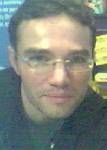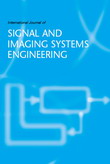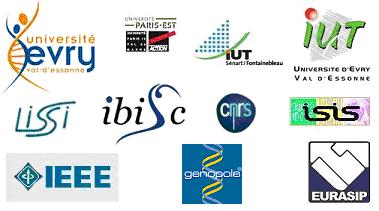
International Conference on Image Processing Theory, Tools and Applications
Tutorials will be held on the first day of the conference.
 Dr. Nicolas Rougon From Institut TELECOM SudParis - ARTEMIS Department, France.
Dr. Nicolas Rougon From Institut TELECOM SudParis - ARTEMIS Department, France.
Presentation (Slides): ipta-2010-tutorial-rougon.pdf Homepage: http://www-artemis.it-sudparis.eu/~rougon/
Presentation Title: Medical image analysis using high-dimensional information-theoretic criteria.
Abstract: Information-theoretic measures provide powerful criteria for solving low-level problems in mono- and multimodal medical imaging based on statistical descriptions of visual features. Important instances include segmentation and tracking, where the discrepancy between object/background features is measured using divergences; and motion estimation and registration, where inter-frame similarity is assessed by comparing jointly observed feature distributions using informations. Classical approaches involve pairwise measures between scalar image features, which can be reliably estimated and optimized in a variational fashion using kernel density estimation techniques. Starting from the popular Kullback-Leibler divergence / mutual information pair and its generalizations, this tutorial will review recent developments for extending information-theoretic image analysis models to:
1. Multidimensional feature spaces, making it possible to deal with high-dimensional photometric information (e.g. patch distribution) and complex appearance descriptions integrating photometric and geometric information. Specifically, we explain in details how the curse of dimensionality issue, which prevents from reliably estimating high-dimensional probability densities from reduced sample sets, can be bypassed using computationally efficient, consistent density-free geometric estimators of entropy, such as entropic graphs and k-Nearest Neighbors entropy estimators.
2. Multivariate measures, paving the way for groupwise analysis of image collections / series. We here review various possible extensions of the bivariate criteria, such as co-information and multi-information, and discuss their adequacy for multi-view and spatio-temporal medical image understanding.
Short Biography: Dr. Nicolas Rougon is an Associate Professor in the ARTEMIS Department at the Institut TELECOM SudParis (Evry, France) where he leads a thematic research programme on quantitative cardiovascular imaging. His scientific interests include variational and PDE-based methods for computer vision, information-theoretic and statistical medical image understanding, information geometry, computer-aided diagnosis and in silico cardiac modelling. He has served as an Associate Editor of IEEE Transactions on Image processing, and is a regular reviewer for leading scientific journals and conferences in the field of image science. He has been an adjunct scientific director of the ISIS CNRS research network, and is a member of the board of the STIC-Santé CNRS-INSERM research network. He is an expert for the French National Research Agency (ANR), the French National Agency for Innovation (OSEO) and the European Community.
 Dr. Abdenour Hadid From University of Oulu, Finland.
Dr. Abdenour Hadid From University of Oulu, Finland.
Presentation (Slides): Soon
Homepage: http://www.ee.oulu.fi/~hadid/
Presentation Title: Image and Video Descriptors.
Abstract: Feature (or descriptor) extraction from images and videos is a very crucial task in almost all computer vision systems. It consists of extracting characteristics describing important information in the images and videos. Different global (or holistic) methods such as Principal Component Analysis (PCA) have been widely studied and applied but lately local descriptors (such as LBP, SIFT and Gabor) have gained more attention due to their robustness to challenges such as pose and illumination changes. This tutorial gives an exhaustive overview of different image and video descriptors which can be found in literature with an emphasis on the most recent developments in the field. The tutorial will then focus on one or two state-of-the-art descriptors to demonstrate step by step how to successfully apply them to various computer vision problems such as biometrics, texture analysis, image and video retrieval, motion and activity analysis, human-computer interaction etc.
Short Biography: Abdenour Hadid received his Engineer Diploma in Computing from the National Institute of Informatics (INI, Algiers), in 1997, and the Doctor of Science in Technology degree in electrical and information engineering from the University of Oulu, Finland, in 2005. Now, he is a senior researcher in the Machine Vision Group, University of Oulu. His research interests include: biometrics and facial image analysis, local binary patterns, manifold learning, human-machine interaction, and mobile applications. He has authored several papers in international conferences and journals, and served as a reviewer for many international conferences and journals. He is a member of the international Association for Pattern Recognition (IAPR) and the advisory committee of the forthcoming Algerian Summer School on Biometrics. He lectured several invited talks and tutorials in international events. He has been visiting the Institute of Automation at the Chinese Academy of Science (Beijing, China) from March 2006 till June 2006 and the Institute of Industrial Science at the University of Tokyo (Tokyo, Japan) from June 2009 till August 2009.
 Dr. Marc Chaumont From University of Montpellier II, france
Dr. Marc Chaumont From University of Montpellier II, france
Presentation (Slides): Soon Homepage: http://www.lirmm.fr/~chaumont/index.html
Presentation Title: H.264 video watermarking: applications, principles, deadlocks, and future.
Abstract: Watermarking is known to be a very difficult task. Robustness, Distortion, Payload, Security, Complexity are many constraints to deal with. When applied to a video stream, the difficulty seems to be growing in comparison to image watermarking. Many classical non malicious manipulations of a compressed stream may suppress the embedded information. For example, a simple recompression of a DVD movie (MPEG2 compression) to a DivX movie will defeat most of the current state-of-the-art watermarking systems. In this talk, we will expose the different techniques in order to watermark a video compressed stream. Before, we will present the H.264/AVC standard which is one of the most powerful video-compression algorithms. The discussion about video watermarking will be illustrated with H.264 streams. Deadlocks will be discussed, and then the possible extensions and the future applications will conclude the presentation.
Short Biography: Marc Chaumont was born in November 1976, in France. He received his Engineer Diploma in Computer Sciences at the INSA (National Institute of Applied Sciences) of Rennes, France in 1999 and his Ph.D. in Computer Sciences at the IRISA Rennes (INRIA, CNRS, University of Rennes 2, and INSA) in 2003. His Ph.D. thesis was about video objects representations, with dynamic coding and scalability functionalities, in the video compression area. He has carried on for one year its research activity at the INRIA Rennes and for one another year at the University Technological Institute of Bayonne, France as a Visiting Assistant Professor. During this last year, he focused on face tracking using a deformable 3D face model. Since September 2005, he is an Assistant Professor in the LIRMM (Laboratory of Computer Science, Robotic and Microelectronic) of Montpellier and the University of Nîmes. His current interests areas are watermarking, steganography, video compression, and to a lesser extent segmentation & tracking in videos.

